Days In The Wild - Big game Hunting podcast
John Stallone Interviews Hunting Pros to get inside hunting tips and tactics western big game hunting, bowhunting, mule deer, elk, whitetail deer and predator hunting. Formerly Interviews With The Hunting Masters
Episodes
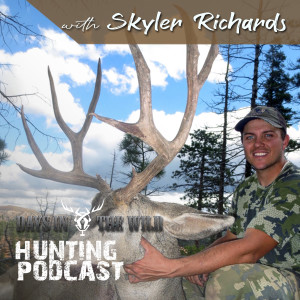
Monday Sep 28, 2020
Mule Deer Hunting With Skyler Richards
Monday Sep 28, 2020
Monday Sep 28, 2020
Hunting Mule Deer with Skyler Richards
Show Notes:
I’m talking with Skyler Richards today to see how he approaches mule deer. As a full-time hunting guide for Color Country Outfitters in Southern Utah, Skyler’s been full-on immersed in hunting as a profession for the last 9 years.
Sometimes hunters like to plan a hunt around a trophy, or the kind of animal they want to hunt, or even the tags they pull. Skyler’s method starts with terrain, so he shares some of the key features he looks for when he puts together a hunt.
One thing that mule deer are famous for is taking one look back right before they walk over a ridge. That habit is one that’s gotten a lot of them killed over the years, says Skyler. Most of my own bigger bucks were caught during the rut, but I prefer catching them when they’re feeding. For Skyler, he spends a lot of time scouting out animals and terrain before hunting season so that he knows exactly where to catch them on their feeding grounds.
I have a few spots left open for some guided hunts, so if you’re ready to blow off some steam and enjoy the beautiful Arizona weather, contact me through my website.
What’s Inside:
How Skyler likes to plan his hunts, and why he doesn’t rely solely on Google Earth.
Skyler uses his guide experience to talk about how to find bigger bucks.
The guaranteed moment that you’ll know when you’re going to bag your deer.
Mentioned in this Episode:
Days in the Wild on itunes
Days in the Wild on Podbean
Phoenix Shooting Bags
Book a hunt with John
Color Country Outfitters
Short Description:
Every hunter plans the hunt a little differently because of their experience and expertise. As a full-time hunting guide in Southern Utah, Skyler Richards has been on a lot of hunts. Today we’re talking mule deer, including Southern Utah’s special Paunsaugunt mule deer population.
Tags:
Mule deer hunting, deer hunting in Utah, mule deer in Southern Utah, hunting Paunsaugunt mule deer, mule deer guide, guided hunts in Utah, how to plan a mule deer hunt
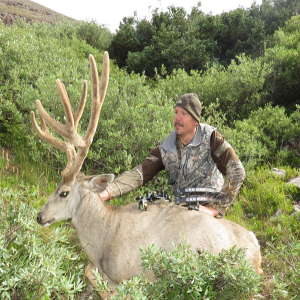
Monday Sep 21, 2020
Mule Deer Hunting Brian Strickland
Monday Sep 21, 2020
Monday Sep 21, 2020
Mule Deer Hunting Brian Strickland
"
I love bowhunting mule deer, but I especially love hunting them during the early season. There’s just something about those fuzzy antlers. Early season hunts often end up being a year-long chess match of sorts: researching and scouting an area before finding, patterning, stalking and ultimately killing the buck you’re after. It’s a long road with bumps, pit stops and challenges. But the reward of finally tagging a buck makes the experience rewarding.
Anyone can get lucky. But when it comes to hunting mule deer, that luck comes after hard work, skill and determination. That’s why there are several factors that contribute to consistent early season success – especially for non-residents who require extra planning.
It all starts with compiling data on a potential hunting spot. Deer population densities. Hunter numbers. Success rates. Type of terrain. State agencies can and will provide this data, and much more. You should also find out where the biggest mule deer are being killed, since that’s generally one indication of properly managed areas. And according to Boone and Crockett’s record-book mule deer entries, the top states are, in descending order, Colorado, Utah, Idaho, Wyoming and Nevada. New Mexico and Arizona fall to No. 6 and 7, respectively. All-time entries rank slightly differently, with Colorado, Idaho, Utah, Wyoming and New Mexico taking the top five spots."
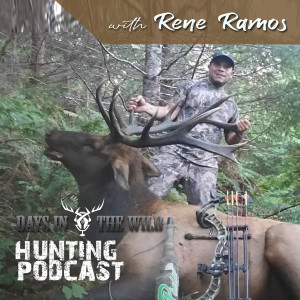
Monday Sep 14, 2020
Elk hunting without a call Rene Ramos
Monday Sep 14, 2020
Monday Sep 14, 2020
Hunting Roosevelt Elk in the PNW with Rene Ramos
Show Notes:
The Roosevelt elk is also known as the Olympic elk or Roosevelt’s wapiti, and it lives in the Pacific Northwest area, stretching down to Northern California and up to Washington. I’ve hunted for them before, so I have some experience, but it’s nothing compared to Rene Ramos’s experience.
As a native Oregonian, Rene has spent his entire life hunting in his backyard, and he’s focused all of his attention there. Because he’s grown up in the area, he’s gotten to know the herds. He likes stalking, tracking, and paying attention to the signs in nature instead of relying on calling to hunt.
We talk about the black-tailed deer that live in that area, which is almost like my nemesis, and Rene shares his current hunting strategy. It’s pretty amazing that one area can hold a hunter’s attention for that long, and it’s cool to see Rene’s enthusiasm for Western Oregon.
If you loved this episode, don’t keep us a secret. Like us, share us, and leave us a review so that we can continue to bring you hunting stories and strategies from folks in the field who love sharing their knowledge.
I still have some space left on the guided hunts I’m doing this year, so let’s connect on my website. There’s never been a better time to get out into the wild and see this beautiful country.
What’s Inside:
How Rene uses stalking as his hunting strategy.
How hunting in the Pacific Northwest and on the coast is a little different.
What the 3 day loop is and how it can help you track elk.
Mentioned in this Episode:
Days in the Wild on itunes
Days in the Wild on Podbean
Phoenix Shooting Bags
Book a hunt with John
Short Description:
Born and bred in coastal Oregon, Rene Ramos has been hunting the same part of the country for his entire life. This has given him a familiarity with the land and the animals that shapes the way that he hunts. Growing up in a hunting family, Rene has some cool stories going back to his childhood about elk hunting.
Tags:
Hunting in Western Oregon, elk hunting in Oregon, Roosevelt elk, black-tailed deer hunting, hunting on the Olympic Peninsula, hunting in Western Washington
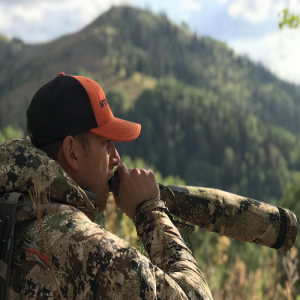
Monday Sep 07, 2020
Elk Hunting Seminar 2020 West Coast Archery
Monday Sep 07, 2020
Monday Sep 07, 2020
Elk Hunting Seminar 2020 West Coast Archery
I was invited to speak on a virtual seminar for West Coast Archery here is the audio of the seminar and the video is up on my Youtube
¨No matter what it is you are hunting when using a call there is always a point that the animal you are calling feels that they should be able to see what’s calling to them, and that is usually when they hang up. I don’t have the secret sauce that will help you get those animals that hang up but what I do have is the recipe to choose your set ups so that they won’t hang up to begin with . And honestly this system works for all animals that we call elk, deer, turkey, predators etc…
I have heard a few guys in the industry refer to it as the doorway principle or the calling room. Simply put, it’s the area at which the animal you are calling suspects to see what it is that is calling to them. You hear it all the time “I called this coyote in and he hung up just outside where I could shoot to”. Or “the turkey came running in and hung up and wouldn’t come into the clearing…” I called a bull in and hung up at 80 yards. I think the person who describes it best is Chris Roe of Roe hunting resources. Chris uses a similar principle and he describes it like this: If you were in a separate room and you heard your wife calling you from a different room, you would get up and go to where you heard her calling from but when you got to the doorway of the room you believed she was in, you wouldn’t just run in there and “say what’s up babe”. You would first look into the room to verify that’s where she was and if you didn’t see her you would continue to look for her or call her name. And if she responded from within that room and you still couldn’t see her you would think something was fishy. Well the same goes for animals they want to see who or what is making the sounds. That’s why set up is the most important aspect to calling in game. Most guys focus all their time an energy into being a “good caller” or a “realistic caller”. Now I’m not saying that it’s not important to sound good and have proper cadences and timing, but you can certainly get by with being a mediocre caller if you know how to choose your set ups.
¨Now I know what most of you are thinking….Decoy…. Not necessarily. I almost never use a decoy but what I do is pick the right set up that forces the animal to step into the room(step into my kill zone) to see what’s calling to them. When choosing a location to call from, I want you to try to be on the other side of the calling and try to imagine what you would do if you were the animal approaching the sound that you’re hearing. Look at it like at it from the perspective of the wind and how an animal would use it, look at it from what is the most direct route to the call and how far animal would have to go to see the call.
¨The room you are creating can be a number of terrain features or vegetation and will depend heavily on what you got to work with.
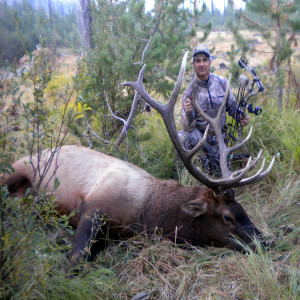
Monday Aug 31, 2020
Elk Hunting Scenarios with Paul Medel 11.35
Monday Aug 31, 2020
Monday Aug 31, 2020
Elk Hunting Scenarios with Paul Medel 11.35
Download and Subscribe to Interviews With The Hunting Masters Big Game Hunting Podcast brought to you by Phoenix Shooting bags on iTunes, Podbean, Player FM or Sticher. It's FREE!
Help keep this podcast free and give us review on Itunes and leave us a comment to let us know how we are doing !
www. Johnstallone.me
https://www.instagram.com/johnstallone/
#daysinthewild
#johnstallone
#interviewswiththemasters
#hunting
#elkhunting
#deerhunting
#biggamehunting
#archerypractice
#spotandstalk
#muledeerhunting
#couesdeer
#couesdeerhunting
#ibexhunting
#antelopehunting
#whitetailhunting
#bowhunter
#bowhunting
#johnstallone
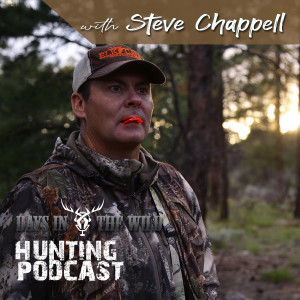
Monday Aug 24, 2020
Arizona Elk Hunting with Steve Chappell, part 2 11.35
Monday Aug 24, 2020
Monday Aug 24, 2020
Title: Arizona Elk Hunting with Steve ChappelL, part 2
Show Notes:
In this second part of our conversation about elk hunting in Arizona, Steve Chappell from Elk Camp and I talk about times when elk calling might backfire on you, and how to think carefully through a situation before you react. Steve’s approach to elk hunting is thoughtful, refreshing, and smart, and I always learn something from him.
If there’s a bull nearby, between you and the bull that you’re tracking, it’s hard to pass that closest one up. But Steve warns that spooking that closest bull may completely backfire on you. For sure, you definitely don’t want to let them know that a human is calling them because it’ll give away too much.
You’ve been working a herd all morning long in an open Ponderosa forest, but you’re pretty sure that if you get closer you’re going to get picked off. Steve suggests waiting a little until the herd moves into thicker country. By letting them get out of view and then moving around them, you put yourself into a better situation . Sometimes the vegetation just works against you, and you need to adjust your strategy.
Good calls are always going to be effective. Ten, twenty years down the road, you’ll still be able to use these same calls. But interestingly, every guy or gal is not going to produce the same sound on the elk call. However, if you are casual about calling elk, you can ruin it for others. We talk about why you should be cautious about casually calling elk while you’re out driving in the country.
Please like us, share us, or leave us a review. I’m sure you’re looking forward to September like we are. Let’s get out there and get into the wild.
What’s Inside:
What kind of unit selection Steve prefers.
What big bulls sound like to Steve.
Why Steve likes using an elk cow decoy and how it helps him out.
Steve recommends his favorite elk decoy.
Some specific advice for Arizona elk hunting.
Mentioned in this Episode:
Days in the Wild on itunes
Days in the Wild on Podbean
Phoenix Shooting Bags
Elk Camp with Steve Chappel
Short Description:
In part 2 of my conversation with Steve Chappel, we talk about some of the challenges of hunting elk in Arizona. Steve’s thoughtful approach to elk hunting always makes me think more carefully about what I’m doing when I’m out in the desert. As an expert bugle caller, Steve talks a lot about how to communicate with the elk herd.
Tags:
elk cow decoy, arizona elk hunting, elk calling, elk decoy, elk bugling, identifying a dominant elk, tracking elk, hunting elk in open spaces
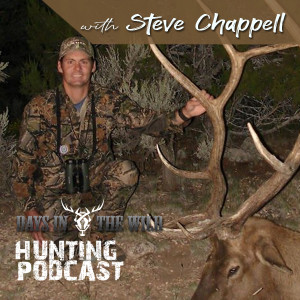
Monday Aug 17, 2020
Arizona Elk Hunting Scenarios with Steve Chappell Part 1 - 11.34
Monday Aug 17, 2020
Monday Aug 17, 2020
Title: Arizona Elk Hunting with Steve Chappell 11.34
Show Notes:
These guys who are getting it done year in and year out can really help you build yourself into a better elk hunter. That’s why I wanted to talk with Steve Chappell from Elk Camp and Chappel Guide Service. Steve started as a guide back in the ‘90s in Arizona, and this family legacy has shaped his excitement for elk early on.
Herd bulls are all about jealously guarding their cows, so Steve has to trigger a response carefully from them. He says that herd bulls are more vulnerable than you think, so he prefers to use a display bugle. This sounds like a high, sweet note that then gets dumped down into that lip ball sound. When you put all of these sounds together, you’re going to get an aggressive bull coming right at you.
Modern hunting can help you find and track better than ever. When Steve is out tracking, he likes to use all of the resources available to him:
Where they feed
Their source of water
Cow-calf groups
Signs of rubbing activity
Flatline maps
OnX maps
It’s definitely to your benefit to read the situation so that you can be what you need to be on the hunt. I’ve hunted with guys who are more aggressive, and wow, the difference was amazing. We talk about the difference between being more aggressive and stalking quietly. Because he’s based in Arizona, Steve gives some Arizona specific advice around the full moon and the best rut days in the state.
I can’t encourage you guys enough; like us, give us a review, and share us with your friends. Help us continue to bring you hunting stories that prepare you for the different scenarios that you’re going to encounter out there.
What’s Inside:
How the elk react to a full moon.
According to Steve, these are the best rut days in Arizona.
Distance is the determiner in the effectiveness of Steve’s elk calling.
Steve’s tactic for introducing himself to a bull.
In Arizona, Steve prefers morning and evening hunts.
Mentioned in this Episode:
Days in the Wild on itunes
Days in the Wild on Podbean
Phoenix Shooting Bags
Elk Camp with Steve Chappel
Short Description:
Sharing some Arizona specific elk hunting love today, Steve Chappel talks strategies, tips and tricks for getting the elk you’ve had your eye on. As a hunting enthusiast from the age of 5, Steve brings a wealth of experience to the table about tracking, calling, and making good judgement calls about the hunting situation.
Tags:
elk hunting, elk hunting in Arizona, Arizona elk camp, guided elk hunt, elk calling, elk bugling, elk chuckling, finding elk
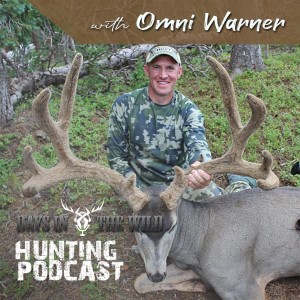
Monday Aug 10, 2020
Mule deer Hunting with Omni Warner
Monday Aug 10, 2020
Monday Aug 10, 2020
Planning a Mule Deer Hunt with Omni Warner
Show Notes:
Some guys like to start planning a hunt by deciding what kind of trophy they’re looking to bag, but Omni Warner prefers to draw a tag first. Although it can be easier for locals to draw a tag, it’s really hard all around, and that’s why he’s not too picky about what state he ends up in.
Some of Omni’s best mule deer hunts have been in Colorado, and we swap stories about some of the mule deer hunts we’ve been on. We’ve both tried to get our kids into hunting, but with varying degrees of success.
I know some of you guys know that I’m an outfitter in Arizona and I run hunts in South Dakota too. I have a couple of slots left in my schedule this fall, so I’m letting you know now before it’s too late that if you want to get in on an excellent hunt, you should get on my schedule.We also have amazing hunts you can do in February, where you can come out and experience a nice hunt in Arizona weather when the rest of the country is miserable and cold.
If you loved today’s episode, please share us or leave us a review. And don’t forget to visit our sponsor Phoenix Shooting Bags who make this podcast possible.
What’s Inside:
The best state for hunting mule deer.
Why Omni and I both love hunting the rut.
How Omni plans a hunt and looks for trails.
The key to hunting mule deer in the high country.
Mentioned in this Episode:
Days in the Wild on itunes
Days in the Wild on Podbean
Phoenix Shooting Bags
Book a hunt with JohnOmni Warner on Instagram
Short Description:
Every hunter has a different strategy when he plans a hunt, and Omni Warner’s strategy starts with finding a tag first. We talk mule deer hunts all over the west, and some of Omni’s best tips for finding and stalking your animal.
Tags:
mule deer hunt in NM, mule deer hunt in CO, best way to plan a hunt, book a hunt, hunting in the 4 corners, hunting in Utah, how to plan a hunt

Monday Aug 03, 2020
Kip Fowler Mule Deer Hunting on the Wasatch Front
Monday Aug 03, 2020
Monday Aug 03, 2020
Title: Mule Deer Hunting on the Wasatch Front with Kip Fowler
Show Notes:
A Southern Utah native, Kip now lives and hunts in Northern Utah, along the Wasatch Front. Backpacking bow hunting in the high country is one of his specialties, and he shares some of his advice for how to improve your hunting game.
Kip was always worried about becoming too reliant on technology, but there came a point when he realized that it was actually holding him back and it cost him a prize deer. That’s when he started to look for tools that would make the hunt easier, and he shares some of his adaptations.
It’s so easy in bowhunting to get discouraged, especially when you have moments where you get so close, but then something goes wrong. “Really successful bowhunters are constantly trying to eliminate the things that could go wrong”, says Kip. And they stick with it.
A lot of bowhunters will spend tons of time practicing their shot, testing their equipment, and planning their hunt. But they’ll forget to try out the food they’re going to eat ahead of time, and that can lead to some seriously unpleasant surprises out in the backcountry. Don’t forget to test your food, and your body’s reaction, before you head out.
Pictures can help you remember a hunt, but they don’t tell everything. Kip and I both have journaled some about our hunts, and the details we recorded are so much different and more helpful than just looking at pictures.
If you loved this podcast, don’t keep us a secret. Like us, share us, and leave us a review so that we can keep bringing you hunting stories from some of the greatest experts in the backcountry.
What’s Inside:
When water sources and feed sources are an important part of the hunt.
Where is it easier to hunt mule deer: the desert or the high country?
Why mental fortitude is going to help you on the hunt.
How nail polish, sharpies, and other hacks can help you make small improvements.
Mentioned in this Episode:
Days in the Wild on itunes
Days in the Wild on Podbean
Phoenix Shooting Bags
Short Description:
As a lifelong bowhunter, Kip Fowler has some tips to take your bowhunting to the next level. In addition to telling some great hunting stories, Kip focuses on some of the smaller details today that can add up and make your bowhunting experience more successful and enjoyable.
Tags:
Utah hunting, mule deer hunting, hunting on the Wasatch Front, improve your bowhunting, bowhunting technology, bowhunting tips and tricks, bowhunting hacks
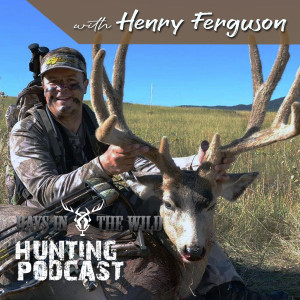
Monday Jul 27, 2020
Bow Hunting & Mule Deer with Henry Ferguson
Monday Jul 27, 2020
Monday Jul 27, 2020
Title: Bow Hunting & Mule Deer with Henry Ferguson
Show Notes:
As I’ve been working through my broadhead testing to find the absolute best bow on the market, I’ve found that I can’t have it all. If I want good penetration, good flight big wound channels, you always have to give up something to gain something. Henry Ferguson, an avid bow hunting sportsman, and I talk about what we look for in bows and some drawbacks to different designs.
There are so many variables in every hunting situation. You can go with your gut, or you can make the mistake of listening to some friends. Nathan talks about a hunt that ended disastrously because he ignored his own experience and listened to some fellow hunters. And instead of nailing his buck, he totally scared it off. Then he tried a different tactic, and he talks about the two important lessons he learned from this experience.
The energy of your body tunes the animals into what you intend to do. If you want to tip them off every time, do this one move that switches you from innocent bystander to deadly hunter. It’s so amazing how close you can get to an animal they don’t see you as a threat to them. We talk about how we sometimes use this move to get closer to bucks, and a few times when it backfired on us.
If you loved this show, don’t keep us a secret. Like us, share us, and give us a review. Your support continues to make this podcast possible.
What’s Inside:
Some of the most surprising results coming out of my bow testing so far.
The difficulty around finding the perfect bow hunting equipment.
The amazing moment when a buck knows you’re a hunter and not a lost hiker.
Henry shares some amazing hunting stories.
Mentioned in this Episode:
Days in the Wild on itunes
Days in the Wild on Podbean
Phoenix Shooting Bags
Short Description:
We’re talking mule deer with my buddy Henry Ferguson who says that hunting mule deer with a bow is a lot like being a salesman. You have to get used to a lot of rejection. We talk about some hunting fails and what we would’ve done differently, and Henry imparts some of his wisdom after hunting mule deer for years.
Tags:
mule deer, bow hunting, best bows for hunting, stalking mule deer, best bow hunting equipment, Colorado mule deer hunt, Arizona mule deer, Utah mule deer










